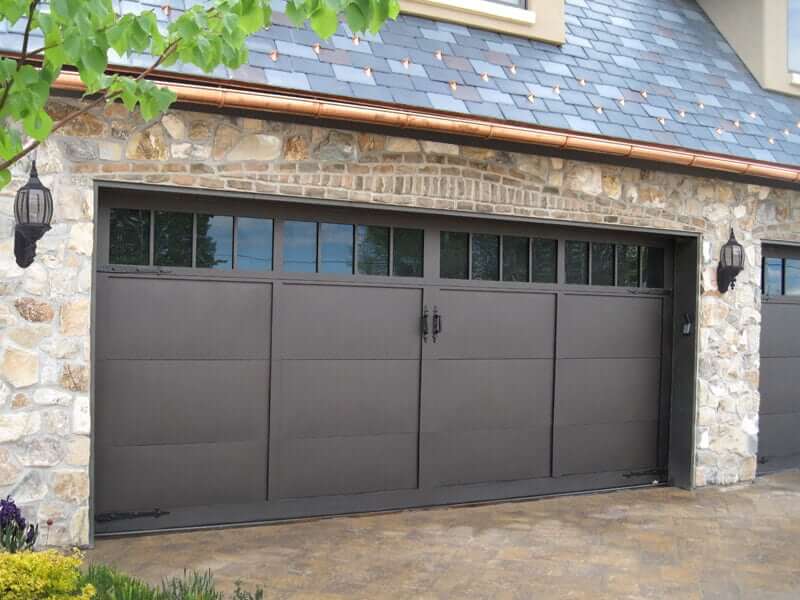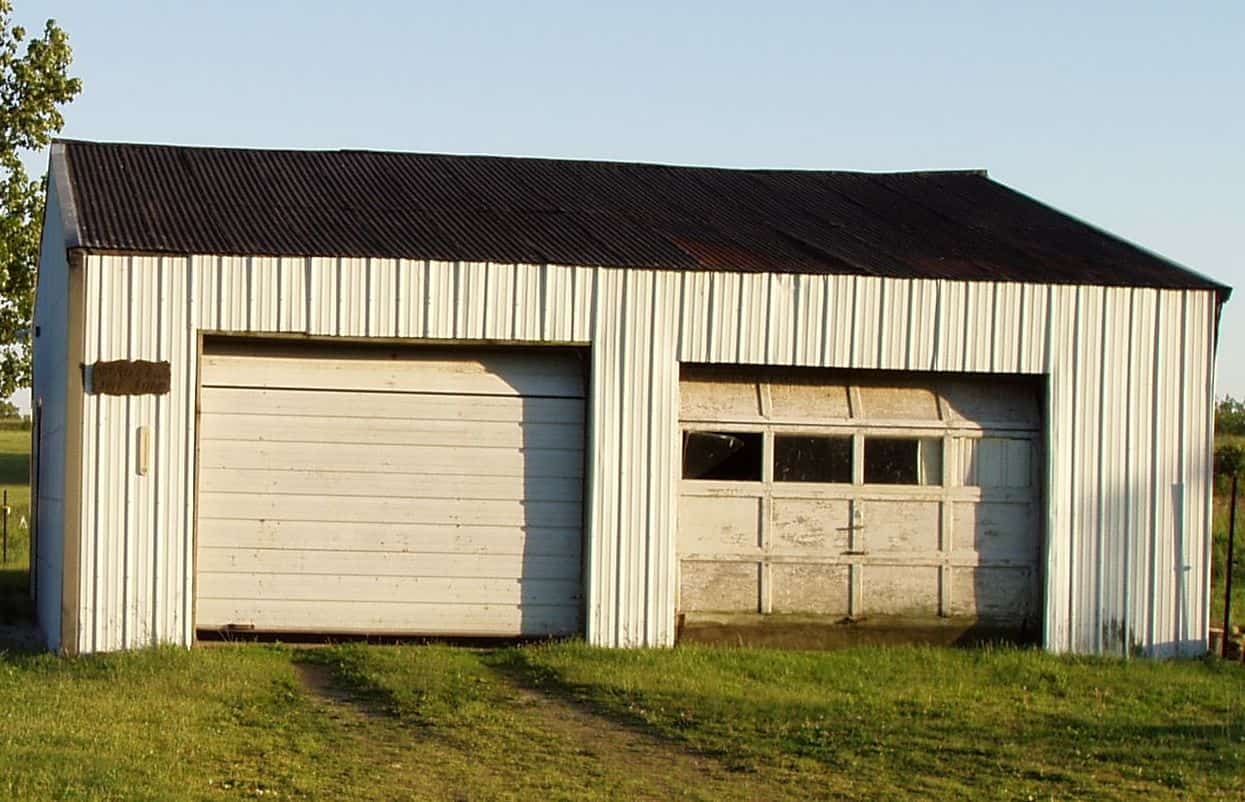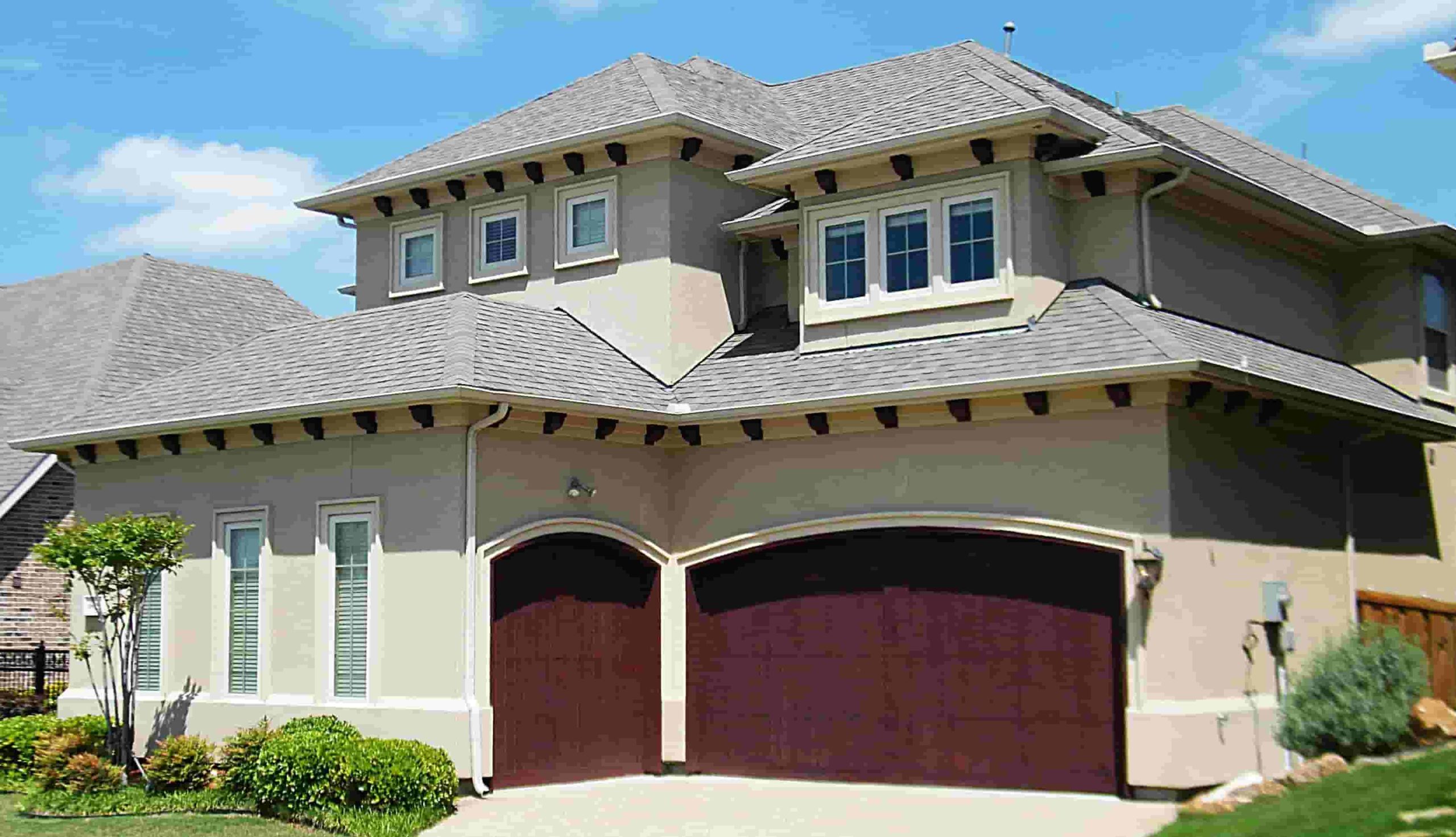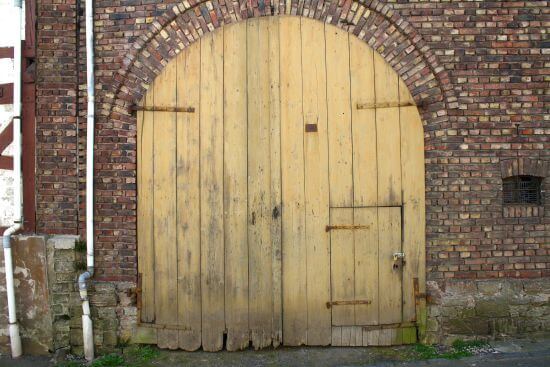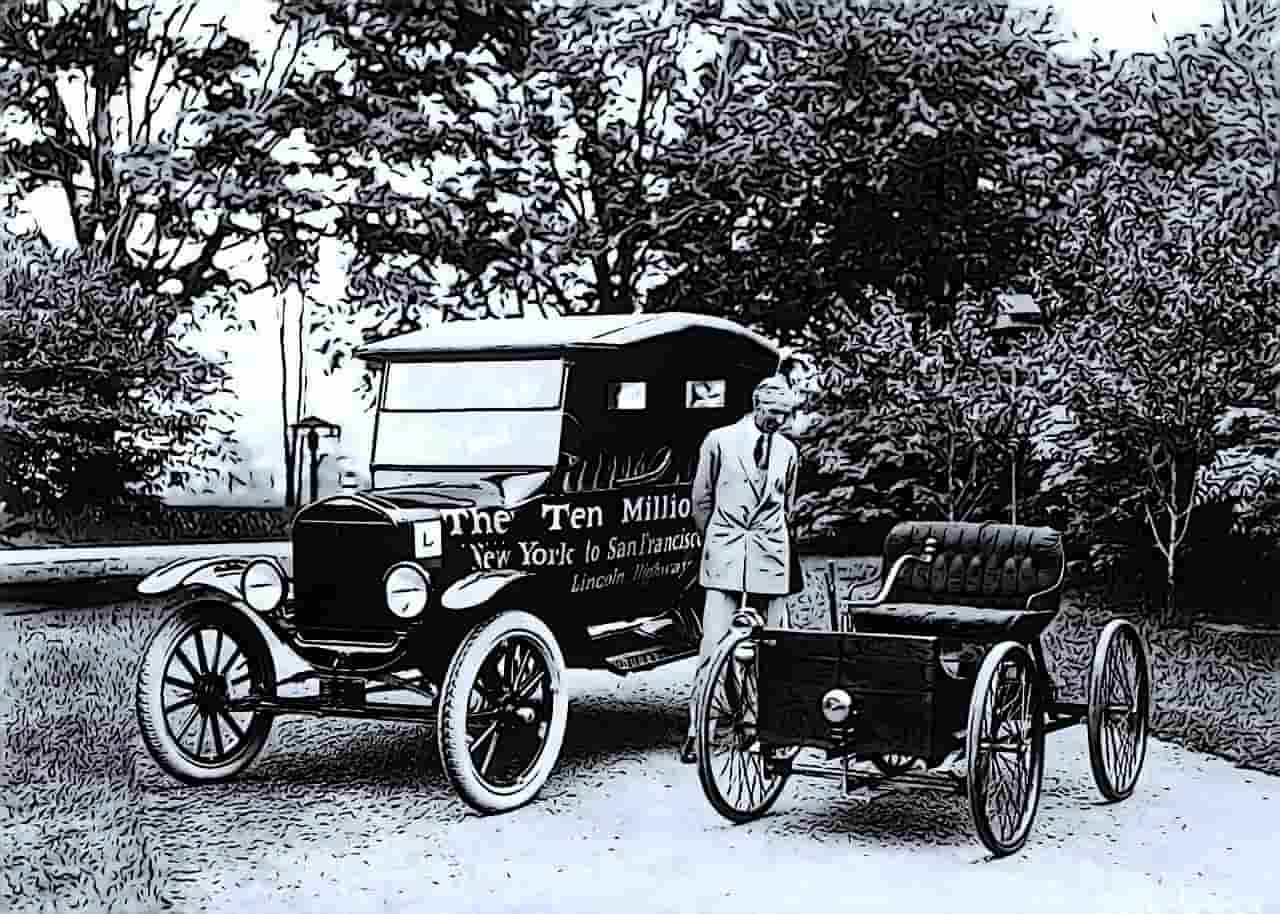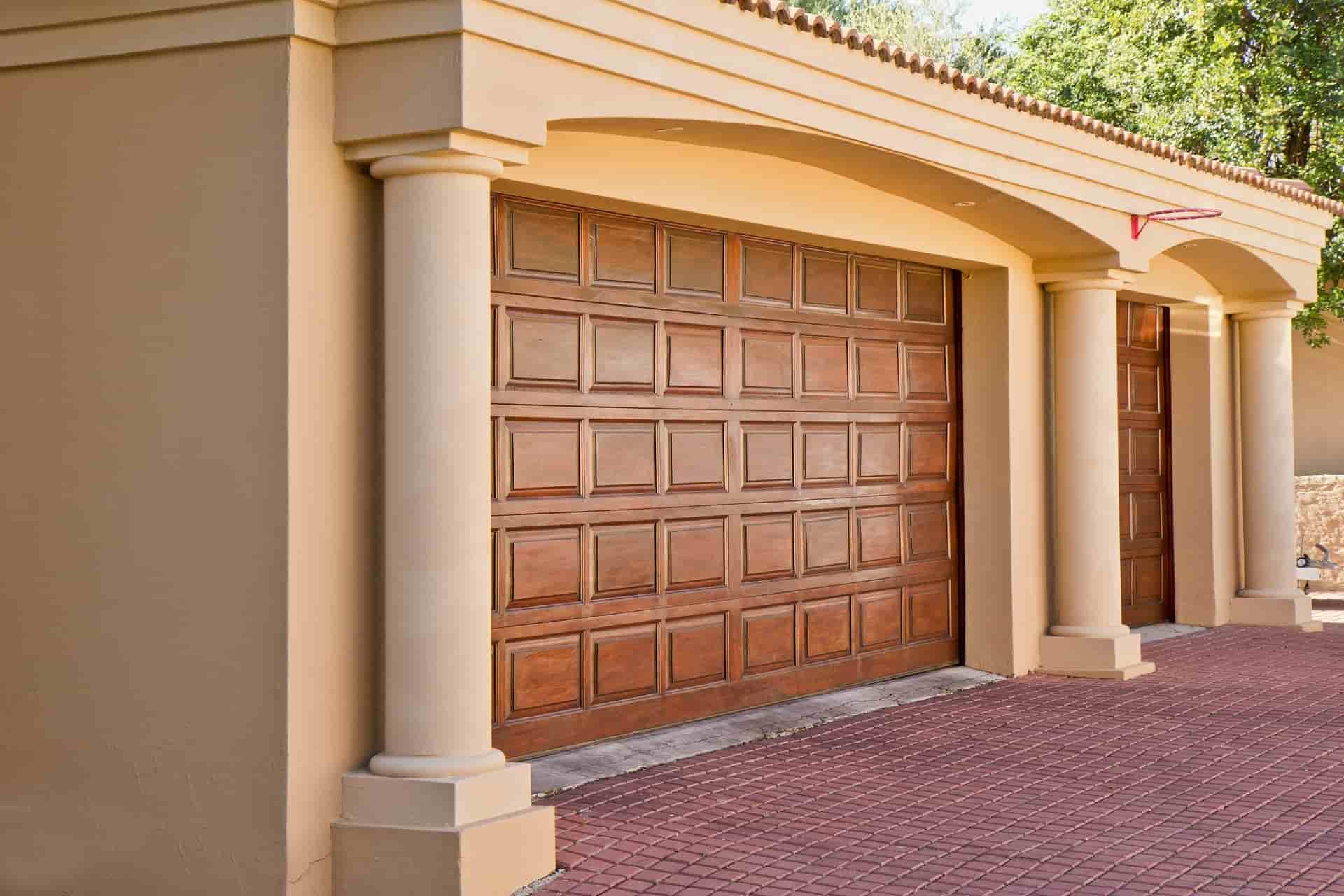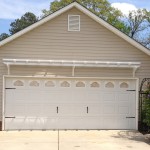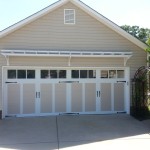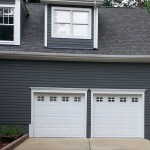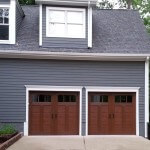Operate Your Garage From Anywhere
Mobile apps are geared at making your life easier and more efficient. They’re not just useful for shopping or work either, but in most areas of your life. New smarthome apps allow you to monitor and control various electronics no matter whether you’re in the boardroom or your own bathroom, and it’s no surprise that one of the latest go-to mobile products is a cell phone garage door opener. Think of the convenience — and the added security — you get from being able to check on, open or close your garage door from no matter where you are located!
Getting to Know LiftMaster MyQ®
LiftMaster represents a trusted name in garage doors and gate operators. It makes sense then that the company would be among the first to create mobile apps capable of controlling their products from anywhere in the world. Your garage door is an important gateway to your home, and LiftMaster knows you want and deserve — total control of its operation.
The LiftMaster MyQ® mobile app provides more than just a way to open and close your garage doors. You can monitor the status of your garage door, as well as receive alerts whenever the status changes. You can log on and see how long the door has been opened or closed. You can even send an alarm to whomever may be in your garage that it will be closing.
Whether you’re expecting a delivery or have a child who lost their keys, the garage opener app provides heightened security and convenience to homeowners everywhere. It’s also extremely easy to use and gives you a spare garage door opener in the event yours gets lost or broken.
Compatible Garage Door Models
The LiftMaster MyQ® works with several brands of openers made after 1998, including LiftMaster, Chamberlain, Craftsman and Raynor & AccessMaster. Your Custom Door & Gate specialist will help you determine whether your current model is capable of remote control and monitoring. If not, you’re sure to find a reliable, well-functioning model among the LiftMaster units we carry for your garage, home or yard security.
Ask about the latest features available and which units will best serve your home. From multiple door garage configurations to automated drive or property gates, we only sell models you can depend on to keep you and your belongings safe! You won’t get more secure than pairing an upgraded unit with LiftMaster MyQ® technology. And setting up your new smartphone garage door opener couldn’t be easier.
Plug in to Today’s Home Technology
If you have an internet connection in your home, you’re all set to take advantage of a garage door remote app. It all starts with the MyQ® 828LM Internet Gateway device. Simply connect the sleek black unit to your internet router using the included Ethernet cable. Registration takes just a few minutes.
Once complete, you’ll be able to download the MyQ® app to your Apple, Android or Blackberry mobile device. Alternatively, you can log on to the online portal from any computer. From there, you can add your garage door — and other home electronics — and control them from any location.
While at Custom Door & Gate, we’re most concerned with the garage and gate-controlling features of LiftMasters MyQ® technology, homeowners can use the application to control many things. You can:
- Turn on your home’s outdoor lighting
- Set your gate to close on a timer
- Adjust the lighting inside your home
You can control up to 16 devices at once using your MyQ® app per Internet Gateway. Need more power or privacy? Add a second unit secured with its own password! You can also use the technology in combination with other leading smarthome hubs, including Comcast Xfinity, the Wink Home Monitoring System and Nest, the predictive thermostat capable of controlling smoke detectors, carbon monoxide detectors, security cameras and other common home appliances.
Save Time and Stay Secure With MyQ®Benefits
For more than 25 years, Custom Door & Gate has been providing home and business owners throughout North Carolina with affordable, simple solutions to life’s common problems. Get control over your home’s security features with the latest technology available from one of the industry’s leading manufacturers. Combining garage, gate and light controls with mobile convenience helps your home stay as secure as possible while still allowing easy access to those who need it the most.
Contact our dedicated customer service team to discuss adding a garage door opener app to your smarthome tools. Call Custom Door & Gate at 919-457-9489 today.
Garage Door Prep for Summer
A garage door is one of the most used features in your home. In fact, most homeowners use the garage door as their front door — it’s the place where they leave and enter the home. This heavy use and importance are the reasons why you should provide regular maintenance services for your garage door. These services don’t have to be expensive, and they don’t have to take a significant amount of time, but they should be seasonally appropriate.
With the hottest months of the year approaching, take this time to prep your garage for summer. Extreme heat and extreme cold can really affect a garage door’s shape and performance, so here’s a rundown of how to ready your garage door for extreme heat and how to prepare your garage door for summer.
Cleaning
Think about how filthy items that are stored in your garage can become. All that opening and lowering of the door allows dust and debris to sneak in a created layer of dirtiness. Take this opportunity to clean your garage door inside and out to get rid of that layer of dirt.
Gentle soap and water will do the trick for light cleaning, but feel free to use some car wax for the dirtiest of jobs. As you clean, inspect your garage door for any warning signs, and some might be specific to your garage door material. For example, look for signs of rotting in a wood door, and search for rust in a steel door. Consider a rust-resistant paint or water sealer as part of your garage door prep for summer and to help protect your garage door into the future.
Lubricating
You want your garage door to run as smoothly as possible, and good lubricant will help. While many people are likely to reach for the WD-40, that’s not the product you want to use. Instead, find a lithium grease or silicone-based lubricant to cover the hinges, tracks and rollers of your garage door. There’s a balance to application, though. You want just enough lubrication that your garage door runs smoothly, but you don’t want so much lubrication that dirt and grime will cling to and build up on top of it. Any dirt and grime that gets in the way will counteract the lubrication and prevent your garage door from running as smoothly as it should.
Inspecting
You’ll want to search through your garage door and garage door opener’s many moving parts to check for signs of wear and warning. Start by checking the garage door hinges and cables. Do you see any signs of stress? Check the track bolts for tightness as well, then take a look at your garage door springs. Are they free of rust?
Each of these parts will break down eventually, but catching any issues early can help reduce the cost of repair and replacement. And always be sure to contact a professional if you see any warning signs during your inspection. A garage door’s parts are often under a massive amount of tension. This tension is what allows your door to work properly, but it can also pose a danger for novices who attempt to repair or replace parts on their own.
Sealing
If you’re like most homeowners, you want your garage door to be as energy-efficient as possible — and to remain cool during the summer. That means a focus on insulation and weather-stripping is necessary when you’re preparing your garage for summer.
Check along the edges of your garage door for any weather stripping that looks like it’s fraying or otherwise coming apart. Your insulation will be more difficult to examine as it’s often enclosed in a sandwich of panels, but look along these panels for anything that concerns you. As with any of these areas, an inspection from a professional can also help determine how your insulation is holding up.
At Custom Door & Gate, we can help you get your garage ready for summer. Since 1989, we’ve been working with home and business owners in Raleigh, Greenville, Greensboro, Fayetteville and surrounding communities, delivering the quality products and exceptional services they want and need.
Our approach is simple: We do what we say we’re going to do, and we do it at the price quoted. This allows us to provide helpful, responsive service that’s designed to meet your needs. Whether you’re trying to get a garage door ready for summer or you’re searching the market for a new garage door at your home, you can count on the team at Custom Door & Gate.
Contact us today about garage door maintenance and your other garage door needs.
2016 Changes for UL 325
On January 12, 2016, new UL 325 standards went into effect. The UL 325 standards are guidance for the proper installation and maintenance of door, gate, window, drapery and louver systems and operators. While much remains the same as in the past, there are important changes that installers of gate operator entrapment protection systems must know and understand to ensure compliance. Here’s a look at what has changed this year:
Minimum Two Entrapment-Protection Devices
Operators must have at least two entrapment protection systems. You can have any combination of inherent- and external-type systems, though a duplicate of the same device cannot satisfy this requirement. In other words, you can have an inherent-type and external-type system, or you can have two inherent-type or two external-type systems — as long as the systems do not apply to the same device. Gate operator installers should approach each job from this point forward with a focus on creating solutions that satisfy this requirement for UL 325 compliance.
The Use of Contact and Non-Contact Sensors
A contact or non-contact sensor can serve as an external-type device, though there are caveats when you choose this path to UL 325 compliance. The sensor that serves as an external-type device must be monitored at minimum once per cycle for both proper sensor operation and proper sensor connection. In the case of a missing or malfunctioning device, the gate can only be operated through control device pressure, which means that wireless controls will not be in operation.
Installer Responsibilities
During gate operator installation, it’s up to the installer to decide if a risk of obstruction of entrapment is present. While the manufacturers of gate operator controls are required to provide guidance for where to place external devices, these manufacturers typically only give suggestions in their instruction manuals. It’s the emergency access control systems installer who must determine whether or not the risk of obstruction or entrapment exists. And, if it does, the installer must provide two independent methods of entrapment protection.
No More Segmentation
Previous iterations of UL 325 segmented entrapment protection devices into two categories: primary and secondary. That’s no longer the case. Underwriters Laboratories has determined that all entrapment protection devices should be considered equally important, and the terms primary and secondary did not reinforce that thinking.
A Change for Audible Alarms — Type E Devices
Audible alarms, better known as Type E devices, are no longer acceptable as one of the two entrapment protection devices. It’s been determined that audible alarms are more of a warning device. That doesn’t mean they’re considered any less important. In fact, under the new UL 325 regulations, gate operators in all classes are required to include an audible alarm that is triggered when a contact-type system detects back-to-back obstructions.
A New Exception for Emergency Access Controls
Emergency access control systems may now be placed in any location where emergency responders such as firefighters, police, EMS crews and others can have clear sightlines to the gate. This new allowance conflicts with the manufacturer instruction requirement, which says that the emergency access controls must be a minimum of six feet away from any of the gate’s moving parts. This exception represents a common sense allowance for gate operator installers, which should make installation less restricted.
Slight Change for Barrier-Arm Gate Operators
There’s also a slight change in the exception for barrier-arm gate operators. These operators once required entrapment protection only if the arm moved to a rigid object within two feet. Now, rather than required entrapment protection for rigid objects within two feet, the new distance is 16 inches. While this may seem like an arbitrary change of distance, it was adjusted for closer alignment with ASTM F2200 and its recommendations for entrapment protection.
New Class II and III Definitions
Gate operator installers should familiarize themselves with new slight changes to installation classes. Commercial locations accessible to the public are now part of Class II, and industrial locations not accessible to the public are now part of Class III. These adjustments may impact the appropriateness of different gate operators depending on the type of location where gate operator entrapment protection is needed.
The Importance of These Changes
These changes emerged from close analysis by Underwriters Laboratories and other industry experts. The changes are meant to create an environment where gate operator controls offer the utmost in safety and gate operator controls installers are protected from liability. The faster you get to know and understand these new UL 325 standards, the safer and more effective the installation, service and use of gate operator controls and emergency access control systems are.
If you have any questions or concerns about the changes to UL 325 standards, get in touch with the local experts at Custom Door & Gate.
Signs It’s Time to Replace Your Old Garage Door
Choosing home improvement projects is a challenge. There’s always something that can be done, and all homeowners search for projects that will provide a significant return on investment. Good news: A replacement garage door is proven to provide a return on investment greater than many other home improvement efforts.
But when you should you make the leap? Here are a few ways to know when to replace your garage door:
Slowness
Does your garage door respond slowly when you try to raise or lower it? It should take only a moment between hitting the opener button and your door leaping to action. If there’s any sort of delay, especially a lengthy one, it’s time to have your door examined by a professional who can identify any issues.
Noise
A brand new garage door is smooth and relatively quiet. As that garage door gets older, a number of factors make it run rougher and louder. Have you noticed a sudden increase in just how noisily your garage door opens and closes? If so, it may be a sign the unit is ready for a full overhaul.
Attractiveness
A garage door is often one of the most prominent parts of your home that faces the street. Perhaps when it was installed years ago, it was sleek and stylish. But no style lasts forever. You have the opportunity to greatly enhance your home’s curb appeal when you install a modern garage door that complements your home’s existing architecture.
Safety and Security
New garage doors help keep the assets you store inside your garage safe and secure, both from the elements and from anyone who might try to break in. New garage doors also include the latest in safety technology, including automatic reversal if the door comes into contact with an unexpected object. If your aging door does not provide the safety and security you want, it’s time to consider a new garage door.
Breakdowns
One of the biggest signs your garage door needs replaced is malfunctions. A garage door is just like any asset. You can invest in replacement parts over and over. But you eventually reach a point at which it’s more cost effective to simply replace the entire unit. Is your garage door in need of regular maintenance and repairs — perhaps more regularly than you would like? Consider the option of a full replacement.
Damage
Dings and dents pile up over the years, whether from unintended collisions, balls thrown by children against the door, hail or other factors. You can manage these dings and dents for a certain amount of time, but they will eventually overwhelm your garage door and its appearance.
Bills
Are your energy bills skyrocketing? You may be losing air conditioning cooling through your non- or poorly insulated garage door. Make your home more energy efficient when you choose a new insulated unit.
Are you seeing signs indicating the necessity of garage door replacement? If so, contact us at Custom Door & Gate. For more than 25 years, we’ve been serving Raleigh, Greenville, Fayetteville and other North Carolina communities with high-quality products and exceptional customer service. When you need a replacement garage door at your home, trust Custom Door & Gate.
The History of Garage Doors
A garage is so much more than just a place to park a car. And the history of garage doors includes a long line of innovations and adaptations that have given today’s home and business owners a lot of options when choosing the perfect garage door. Let’s take a look at the many twists and turns in the history of garage doors:
The Earliest Garages
The history of garage doors dates back thousands of years, to 3500 BC or perhaps even earlier. That’s when the first wheels appeared. Since the first moment humans used wheels for transportation, they’ve been looking for places to park their vehicles.
City and town gatehouses served as the first vehicle storage spaces back in ancient times. In the 18th and 19th centuries, carriage houses appeared as storage. In places like colonial America, these carriage houses were rarely attached to homes, meaning owners had to walk through the elements to get to their carriages. These carriage houses weren’t much more than barns, featuring dirt floors, simple walls, and gates that served as doors.
Carriage house doors hung from hinges and swung outward. To prevent sagging, the doors themselves included Z- and X-shaped designs that strengthened the doors and distributed their weight.
Here Comes the Automobile
At the end of the 1800s, cars appeared and slowly began replacing horses and carriages. By the early 1900s, thanks to Henry Ford, cars began to proliferate — and storage became a problem. Garages began to appear, but only slowly. In fact, the term garage first appeared in the English dictionary in 1902, a derivative of the French term “garer,” which means shelter or cover.
The earliest cars needed shelter first because they were open — they didn’t have roofs. Early cars were also expensive, and owners didn’t want them to get soaked in a rainstorm or fill with snow. Because of this, many car owners parked them in barns or other existing structures. In urban areas without these kinds of structures, large, private garages appeared. These garages charged a monthly fee, but they still weren’t a perfect solution.
Soon cars became widespread. Not only did the private, fee-based garages begin to overflow, but automobile owners also started to note their shortcomings. For example, to get to your car in a private garage, you had to walk or find other transportation to get to the garage in the first place. This setup subtracted from the convenience of automobiles.
This is when personal garages began to appear. The Sears Roebuck catalog offered portable garages and mail-order garage kits, and the Sweet’s Catalogue offered the first upward operation garage door in 1906.
Perfecting the Design
Early garage doors looked a lot like carriage house doors. They featured swing-out doors that created a problem when it was snowing or otherwise blocked, because the doors wouldn’t open. These carriage house-style doors wore down quickly and required regular replacement. Sectional doors soon appeared as a solution to these problems.
You’ve probably never heard of C.G. Johnson, but he’s the inventor of the garage door featuring overhead operation. Johnson created the first overhead garage door in 1921, and he took advantage of another new development when he created the first electric garage door in 1926.
Getting Attached
By the middle of the 20th century, architects began designing homes with garages attached. This made garages as convenient as possible, allowing homeowners to access their vehicles without having to step out into the elements. After World War II, cars grew larger and larger, and many households began to own two vehicles. Garages grew to accommodate multiple larger vehicles. By the 1960s, the garage represented about 45 percent of a home’s square footage.
Beyond Wood Construction
Through most of the 20th century, garage doors were made of wood. The 1970s brought a shift in materials, making steel, aluminum, fiberglass and other materials. These new materials were a predecessor to the unmatched options home and business owners enjoy today, including composite materials with synthetic insulation. Aluminum and glass garage doors are also popular with the owners of contemporary homes.
Safe Garage Doors
Through the 1980s, garage doors did not retract when they came into contact with something. This created an expensive mistake if a car was left parked under a door, and it created a dangerous mistake if the door closed on a child or pet. A nationwide law passed in the 1990s that required sensors that would signal garage doors to retract if they came into contact with an object before reaching the threshold.
Garage Doors Today
Interestingly, many homeowners are now seeking out carriage house-style garage doors that include the convenience of upward operation. About 80 percent of homes today include at least a single-car garage, and nearly 20 percent of newly constructed homes include three-car garages. Given the convenience a garage presents, it serves as the front door for many families.
There’s also significance beyond vehicle storage. 85 percent of homeowners use their garages for something beyond simple storage of their vehicle. For example, many modern corporations like Hewlett-Packard, Apple, Google and Amazon first started in garages. Where would they be without garages and garage doors?
Custom Door & Gate
What will you use your garage for? How would you like it to look? At Custom Door & Gate, we have served homeowners in Raleigh, Fayetteville, Greensboro, Greenville and other North Carolina communities for more than 25 years. We can help connect you to high-quality, durable garage doors from respected manufacturers. Contact us today!
Do Yourself and Your Car a Favor: Park Inside the Garage
A car is most likely the second largest investment you’ll ever make, just behind purchasing a home. That’s why it’s important to get your oil changed regularly, to wash your car’s exterior and clean its interior regularly. That’s also why it’s so important to use a garage to protect your vehicle. Many homeowners use their garages to store holiday decorations, boxes of old keepsakes, golf clubs, second refrigerators and more. Here are the main benefits of parking your vehicles inside a garage — and why you need a fully functional garage door for your home.
- Protection — You’re probably thinking about rain, snow and ice, and a garage door does protect your car from those elements. However, also think about hail and the damage it can cause to a car. Think about bird droppings and their acidic nature that can damage paint over time. When you park a car inside a garage, you also save it from damaging UV rays that can crack its leather interior. You also won’t have to deal with condensation in the mornings before heading off to work.
- Convenience — Protection from the elements is great, but it’s also convenient to avoid the rain, snow or hail when getting into your car. When you park in a garage, there’s no rushing from your door to the vehicle, getting soaked along the way. You can calmly get into your car before backing out into the elements. This is especially true after you’ve been to the grocery store, or anytime when you must unload something from your vehicle. Rain or other inclement weather can be annoying, but a garage provides just the shelter you need to make it enjoyable.
- Security — Even when you live in the safest neighborhood, theft and other crime is a possibility. However unlikely it is, theft will certainly not happen when you park your car inside the garage.
- Appearance — Unless your vehicle works as a perfectly color-coordinated accessory for the rest of your home, parking it inside a garage will make your home’s exterior look clean, uncluttered and attractive. There’s something simple and beautiful about a well-maintained home and an empty driveway.
While it’s difficult to color-coordinate your car with your home’s exterior, you can find a garage door that complements your existing architecture. A high-functioning garage door also makes it easy for you to get your car inside and out of the elements.
At Custom Door & Gate, we have 25 years of experience helping homeowners create the look, feel and function they want in a garage door. Our garage door repair services can fix a faulty garage door, or our residential garage door installation and replacement services can provide a beautiful new product. Contact us today, and secure the garage door that looks great and operates dependably.
What’s the Purpose of a Garage? The Possibilities Are Endless
When you’re choosing a garage door, you may focus on brand names you know and products that offer the performance and amenities you desire. That’s because a high-functioning garage is a crucial part of any household. But a garage sometimes takes on a meaning beyond just the home. Consider what took place inside the garages at these famous addresses:
- 4651 Kingswell Avenue, Los Angeles, CA — Brothers Walt and Roy Disney left Missouri and headed west in 1923. They landed in Los Angeles, where they began filming “Alice Comedy” shorts in the one-car garage behind their Uncle Robert’s house on Kingswell Avenue. They made enough money that they soon moved into the back of a realty office. And they did well enough there that they moved into a real studio. Today, the Disneys’ legacy is known worldwide, and visitors visit Disneyland in Anaheim each year — just about an hour’s drive from where it all started behind a house on Kingswell Avenue.
- 367 Addison Avenue in Palo Alto, CA — Newly married Dave Packard moved with his wife into a first floor apartment at 367 Addison Avenue in 1937. Packard’s friend Bill Hewlett moved into the garage out back. Using $538 in capital, the two started a technology company that would eventually grow into a universal name. At the flip of a coin, they decided whose name would come first in the title of their new endeavor. Bill won. Hewlett-Packard’s first successful project was the HP200A, a low distortion audio oscillator used to test sound equipment — and it was designed and created in the garage on Addison Avenue.
- 2066 Crist Drive in Los Altos, CA — Steve Jobs and Steve Wozniak had a simple plan when they launched their company in 1976. They wanted to design great computers, construct them inside the garage at Jobs’ childhood home, and then sell the computers to a local retailer. The plan worked. In a span of 30 days, Jobs and Wozniak built the first batch of 50 Apple I computers inside the garage on Crist Drive. They then sold them at $500 a pop to a nearby retailer. Almost 40 years later, Apple is one of the most successful, respected companies in the world. And Jobs’ stepmother continues to reside at 2066 Crist Avenue.
- 10704 NE 28th Street in Bellevue, WA — In summer 1994, Jeff Bezos moved his family from New York City to the Seattle suburb of Bellevue. He was looking specifically for a home that featured a workspace from which he could launch his new company — called “Cadabra” at the time. He found this three-bedroom on 28th street, rented it for $890 a month, and began working on his business from inside the home’s garage. A year later, the name Amazon had replaced Cadabra, and Bezos sold his first book online. By 1997, Amazon had issued an IPO. The rest of the story is e-commerce history.
- 232 Santa Margarita Avenue, Menlo Park, CA — In winter 1998, recent business school graduate Susan Wojcicki was worried about making mortgage payments on her home at 232 Santa Margarita. She rented three bedrooms and the garage to Stanford students Larry Page and Sergey Brin, who were still living on campus. Working in the garage and using Stanford’s servers, Page and Brin launched Google, their new search engine. Today, Wojicki is a senior vice president at Google, which has grown into one of the world’s most successful companies. And Google now owns the house on Santa Margarita — garage included.
What will happen in your garage? It’s hard to predict the founding of a world-renowned company, but you never know. Even if your garage is just a place to park cars, store memories or spend rainy days playing games, make sure it’s the high-functioning space it should be.
Custom Door & Gate can help ensure your garage is fully operational and fully ready to accommodate whatever entrepreneurial creativity may emerge from it. The purpose of a garage is to facilitate whatever you like, and we can help you achieve your garage door dreams by repairing common garage door problems, walking you through garage door opener safety tips, or providing expert guidance as you start the process of choosing a garage door.
Since 1989, we have been serving home and business owners in Raleigh, Greensboro, Greenville, Fayetteville and other North Carolina communities. For service, repair, installation or just to answer a few questions, we’re always here to help.
Contact Custom Door & Gate about your garage.
What’s the Purpose of Garage Door Lubricant?
Does your garage door make a frightening noise when opening and closing? While many homeowners think this noise is just part of the garage’s aging process, it’s actually a sign that your door needs lubrication.
Lubrication is a value solution. Rather than spending big on repairs or replacement, you can simply purchase lubrication at your local hardware store and apply it on your own. You also don’t have to wait for noise to lubricate your garage door. Whether or not you hear creaking and groaning, you should lubricate at least once a year or more if you live in a salt-air climate.
Choose Your Lubrication
Look for either lithium grease or silicone spray — each is available for less than $10, depending on the brand and container size. An effective lithium grease will protect against friction and create a moisture-reducing barrier. Quality silicone spray products will also protect, waterproof and help preserve the materials in your garage door. Both lithium and silicone should withstand extreme cold and heat, which is perfect for garage door application. Silicone spray can also help the lubricant reach into tight spaces.
However, don’t reach for the WD-40. Many homeowners have WD-40 sitting around the garage, but it doesn’t provide the effective lubrication of lithium or silicone. WD-40 provides a cleaning benefit by destroying rust and grease. While this can help certain parts of your garage door better, it’s not a true lubricant that reduces friction and protects parts. When in doubt, check with your garage door’s manufacturer. Most brands will recommend a process for lubrication.
How to Lubricate Your Garage Door
Always start by cleaning your garage door, both inside and out. Dilute just a bit of detergent into warm water, and then use a sponge to gently clean and clear away any debris that has built up. Once your garage door is fully clean, there are four areas to address:
- Hinges — For metal hinges, be sure to fully lubricate at the points where each pivots. Do not lubricate if you have a garage door that uses plastic hinges. Lubrication won’t help plastic hinges — it will only serve to degrade the material.
- Springs — Spray lubricant to get full coverage, but stop short of applying so much that it begins to drip.
- Rollers — Apply directly to the rollers, wiping away any excess so it doesn’t drip on the garage floor or on your car. If your garage door includes nylon wheels, don’t lubricate them either. Stick to the bearings only.
- Locks — Are you having difficulty opening and closing the lock? If so, cover it fully in lubricant. This is one area in which spray comes in handy, since it’s difficult to reach inside the lock’s tight spaces.
What about the tracks? Keep them clean rather than lubricating. As described, use detergent in warm water and a sponge to fully clean and remove debris.
Once you’re finished with cleaning and lubrication, raise and lower your garage door a few times. This will help to distribute the lubrication. If any noise prevails, identify where it’s coming from and see if you missed a spot while lubricating.
Your Garage Door Authority
If your garage door needs more than cleaning and lubrication, contact Custom Door & Gate. Since 1989, we have served North Carolina with a wide selection of residential and commercial garage doors, as well as expert guidance and service.
Improve Your Home’s Look and Value
Residential Garage Doors Can Improve Your Home’s Look and Value
Do you ever walk out the front door and find that you aren’t impressed by how your home looks from the street? Are the entrances to your home uninspiring instead of inviting? Getting the curb appeal you want can often seem like a big chore, but there are some simple options that can add the flair that’s missing.
One of the easiest ways to give your home a quick facelift is by replacing your residential entry door or garage door. Reports have found that residential garage door service and replacement is a top home improvement with a strong return, adding up to roughly 92% of its value to your North Carolina home’s value.
Turning everyone’s first impression of your home into “Wow!” can be as simple as getting the right residential garage door for your architecture.
Match Your Aesthetics to Your Residential Entry Door
When it comes to residential garage doors, you’re no longer stuck with the choice between metal-looking doors for your garage. Innovations in insulation and panel design have turned boring door options into a fashionable selection that can bring out the life in your home.
If you’re a fan of the Victoria or French Country styles of architecture and furniture, the right swing-out door with wrought iron hardware can add the perfect finishing touch to your home. A garage door can also mirror barn and stable looks for the perfect rustic feel. You can even enjoy the benefits of a modern door, such as significant insulation, easy movement, and a variety of access options.
Your stone or earth-tone home can get a nice splash of color with a door designed to mirror wood grain. It’s easy to match your palette, whether you prefer cedar, walnut or chestnut coloration. Grain-styled doors also leave a lot of space open for windows so you can match any residential garage door to the style of your home.
Residential Garage Doors for Your Weather
Your garage also needs to work well in a variety of weather conditions. Because it should keep the snow out and the warmth in, insulation is a necessity. Thankfully, cold climates no longer restrict the style of garage door you can pick.
Insulation-layering technology allows the inside of a residential garage door to perform significantly well while the exterior can be matched to the finish and style of your choice. The right window selection can even give your door a homey feeling without risking a loss of heat. Today’s insulation options will give you a great-looking door, so you can keep the cozy feeling intact all winter long.
Your Residential Garage Door Service and Replacement Team
If you have questions about the right garage door for your home, from safety and style to how the coloring will look against your siding, Custom Door & Gate can help. To make sure you get the best door with stunning curb appeal, we offer a residential garage door visualizer so you can design before you buy. See how beautiful your home can be with a new residential garage door.
How R-Value Relates to Garage Doors
The Right Questions to Ask About Your Next Residential Garage Door
As a homeowner, you have a lot of concerns about your residential garage door and how well it can protect your vehicles, secure access to your home, and prevent high heating and cooling bills. A residential garage door, or any entrance into your home, must be strong enough to insulate your home and keep it at a comfortable temperature.
You can judge how well your door will insulate your home by looking at its R-Value and other factors. R-Value is provided by manufacturers of residential garage doors, but it can be a tricky method of comparison. When it comes to R-Value, let’s look at the top questions and what you should understand when choosing your next garage door.
What Does R-Value Mean?
The R-Value of a residential garage door is a way to note the thermal efficiency of a door — a fancy way of saying how well the door insulates its enclosure. R-Value is often used as a way to show if a door is energy-efficient. The value is also based on the thickness of the insulation in your door as well as the chemical properties of the door’s materials. However, it’s not always easy to judge a door on its R-Value because there are differences between how doors are rated and what the values themselves represent.
Ask About What’s Advertised
While the majority of manufacturers will list an R-Value based on the overall thermal efficiency of the door, others have previously provided values based on a select part of the door. For example, calculating based on the center-most panel on a door usually bumps up the R-Value compared to calculations that average it across the entire door.
You might not get what you’re expecting if you get a door with an R-Value that only applies to the best panel. Always ask your door provider and installer to avoid using a door that isn’t what you want.
Ask About Your Residential Garage Door Service and Replacement
Your garage door is a statement. When you put the finishing touches on your door, ask if its R-Value may have changed along the way. Adding windows and glass to your door can reduce the R-Value because there is a gap in the insulation or thickness of your door. You can choose to use insulated glass or double-pane glass, but that may also increase your cost without giving you a big boost to R-Value.
Custom Door & Gate can help you learn more about the right insulation, strength and movement for your home. Let’s work together to keep your residential entry door properly sealed to help your home stay energy-efficient.




